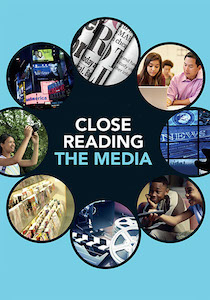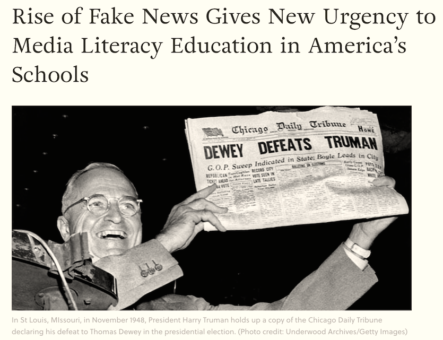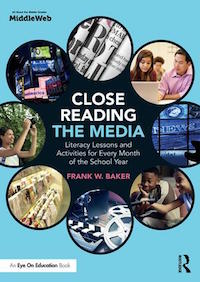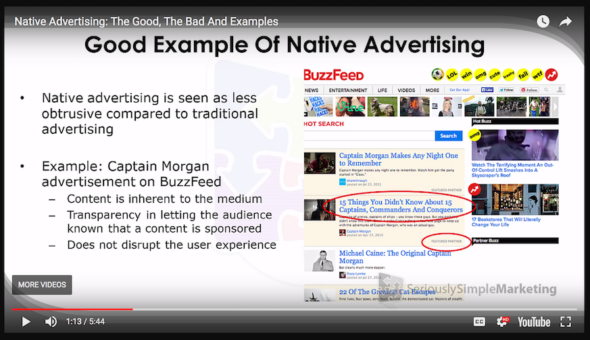Using Short Video Clips to Teach Media Literacy

Media literacy education is designed to do just that.
Every educator who uses images and video in instruction should be interested in what media literacy aims to do: help students make critical thinking a habit as they consume media both inside and outside the classroom.
In the past year, if you read any news story about “fake news,” then most likely you also saw a reference to the importance of teaching media literacy.
In many cases, that reference was about learning to question and evaluate the reliability of news sources. But media literacy is much more than that: it encompasses bias, propaganda, stereotypes, advertising, the grammar of film, and so much more.
Legislatures in several states are currently considering measures that would raise the visibility of media literacy in schools. The goal of these measures is to provide teachers with guidance in engaging students in critical thinking, digital citizenship, and responsible use of online resources.
In my role as a consultant on media literacy education, I’m often asked to recommend videos that teachers could use to help students understand the many facets of media literacy. I use many such videos in my professional development workshops and classroom visits, and I have curated a lengthy list of videos on my website.
Every teacher I know teaches with media, but not all have been trained to teach ABOUT the media. What follows are a few recommendations. You’ll find many more at my website.

What is Media Literacy?
► The Canada-based group MediaSmart has created Media Literacy 101, a series of one-minute videos which introduce media literacy concepts.
► Several years ago, Edutopia created “Media Smarts: Kids Learn How to Navigate the Multimedia World,” a short video that provides an excellent backgrounder on what media literacy looks like inside and outside classrooms.
Fake News
► I recommend “How To Spot Fake News” produced by Factcheck.org.
► The Newseum includes a 5-minute video (with lots of student input) in its middle/high school lesson on Fake News – What’s the Big Deal?. The complete lesson, including activities and discussion, takes 15-30 minutes. (Part of the Newseum resource, The Media Literacy Booster Pack.)
► This Wall Street Journal-produced video, “Study: Most Students Cannot Distinguish Fake and Real News”, explores the recent Stanford research report that revealed the problems students encounter when they read online and social media.
► This PBS Newshour segment profiles efforts in Washington State (which recently passed a media literacy initiative) to teach media literacy to students.
Propaganda
► The study of propaganda should not just be relegated to the Social Studies classroom: propaganda exists all around us. This short promotional video, produced by the Media Education Lab, introduces its website Mind Over Media. A crowd-source page invites users to contribute contemporary examples of propaganda.
► Another video, from Facing History and Ourselves, focuses on the global propaganda used to build support for World War I and includes many examples, including posters and patriotic songs (8 minutes).
Visual Literacy: Reading Photographs
► Several years ago, I discovered the Canadian based Critical Thinking Consortium and their video “Explain The Image.” In two minutes, it demonstrates how students can close-read an image in order to better understand how images communicate.
► “Photo Fact Checking in A Digital Age”, produced by the News Literacy Project, provides a nice tutorial showing students how to verify whether an online image has been manipulated. The presenter is a veteran newspaper reporter with a good delivery.
► Similarly, Common Sense Media’s “How To Use Google Reverse Image Search to Fact Check Images” is also good, especially if your students rely on Google. Essentially, the user will be able to check an image in their possession to see if and how often it appears on the web and in what contexts.
► Many of our students see news images online and on social media, but probably don’t understand the challenges of the news photographer on assignment. “Deadline Every Second” is a promotional video for a documentary that profiles 12 Associated Press photojournalists. We can make more sense of the photos we see when we have more awareness of how they captured.
Advertising
Advertising permeates the lives of our students, whether they realize it or not. Every day, hundreds if not thousands of sales messages vie for their attention. Do they understand ad techniques?
► Here is an excerpt from the documentary “Social Reality” which reveals some of the psychological tricks advertisers use.
► A recent Stanford study revealed that many of our students cannot distinguish between real ads and “native ads.” Here is a video actually produced by a marketing firm that shows examples of effective and not-so-effective examples of native advertising (those ads you see on news and magazine websites that look very much like the actual articles and stories).
► Students may also appreciate “The Art of Rhetoric: Persuasive Techniques in Advertising” since the Common Core Standards now ask students to identify and consider the arguments used in ads.
► A longer video (12 mins.) by behavioral scientist and college professor Robert Cialdini reveals The Science of Persuasion and would probably engage upper middle and high school students. It uses the “drawing while talking” format (made popular by Dan Pink’s Drive animation) and has been viewed 10M times on YouTube.
Using Video Grabs Student Attention
Every educator knows that using videos as part of instruction is one great way to get students’ attention. Today more and more students are using YouTube as a source of entertainment and information. You too can use the video resources there to engage 21st century learners.
There are literally thousands of short videos that could be used in the classroom to teach students about media literacy. I have highlighted just a few here. (For example, did you know that you can find dozens of videos that contain a stream of examples of propaganda, persuasive and deceptive advertising, fake news, etc. assembled for teachers to analyze with students?)
I hope you’ll take the time to review the videos I’ve shared here and at my website. And if you’ve used other videos in your classroom to teach media literacy, please share them in the comments or email fbaker1346@gmail.com.
________________________

Baker maintains the Media Literacy Clearinghouse (www.frankwbaker.com) named as one of the Top Free Best 100 Web Sites of 2017.




































Since I wrote this column, I have discovered that PBS LearningMedia (available through your PBS station) also has a number of appropriate videos. I have collected those on my web site here: https://frankwbaker.com/mlc/pbs-learningmedia-videos/